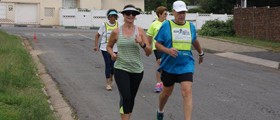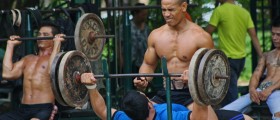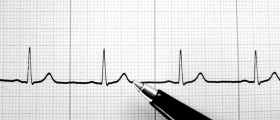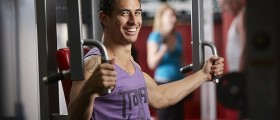Almost every person in the world knows that if he or she suffers from a high heart rate while he or she is exercising, that that can be quite troublesome for him or her. Apart from the heart, it can be harmful for the body as well. However, people need to know that there are ways they can determine a healthy heart rate during the time they are exercising.
Heart rate is a good sign of a healthy heart and a healthy heart is determined by the rate at which a heart beats. Heart is important because it pumps the blood to all the body parts and a person with a good heart rate will have no problems with this function. A slow heart beat is considered to be a healthy one.
When the heart beats faster it is a sign that the heart needs to work harder than usual in order to supply the blood to the body parts. The heart also works harder when a person is exercising.
The main reason why that is so is because there is more need for blood and oxygen in those situations. People need to know that a fast heart rate during exercise is normal but they need to know that the capacity of the heart is limited.

High Heart Rate During Exercise
Before finding out whether the heart rate is high during exercise, people should first get to know the heart rate chart. This chart says that a healthy resting heart rate for children older than 10 years of age and adults is between 60 and 100 beats in one minute.
There are many reasons why a person will perform certain exercises but almost every person knows that exercise is good for the heart. For better health benefits people need to work with higher intensity.
However, when people work with higher intensity, there is a risk of certain health and heart problems. It is not uncommon for the cardiac arrest and a fatal heart attack to occur. This is why people need to watch on their heart rate when they exercise.
- Catecholaminergic polymorphic ventricular tachycardia patients with a higher heart rate recovery at the first exercise stress test off antiarrhythmic drugs are more likely to have been symptomatic before diagnosis.
- Heart rate recovery is higher in catecholaminergic polymorphic ventricular tachycardia patients with complex ventricular arrhythmias (couplets and nonsustained ventricular tachycardias) at the first exercise stress test off antiarrhythmic drugs.
- Vagal reflexes assessed through heart rate recovery are associated with symptoms before diagnosis and complex ventricular arrhythmias during exercise in catecholaminergic polymorphic ventricular tachycardia patients.
Maximum Heart Rate During Exercise
The best way a person can determine the possible maximum heart rate is while performing a stress test on a treadmill but in the presence of a medical officer. There are several formulas for this but the easiest one is the age adjusted formula. According to this formula, maximum heart rate for women is 226 – (minus) age and for men is maximum heart rate 220 – age.













_f_280x120.jpg)



Your thoughts on this
Loading...